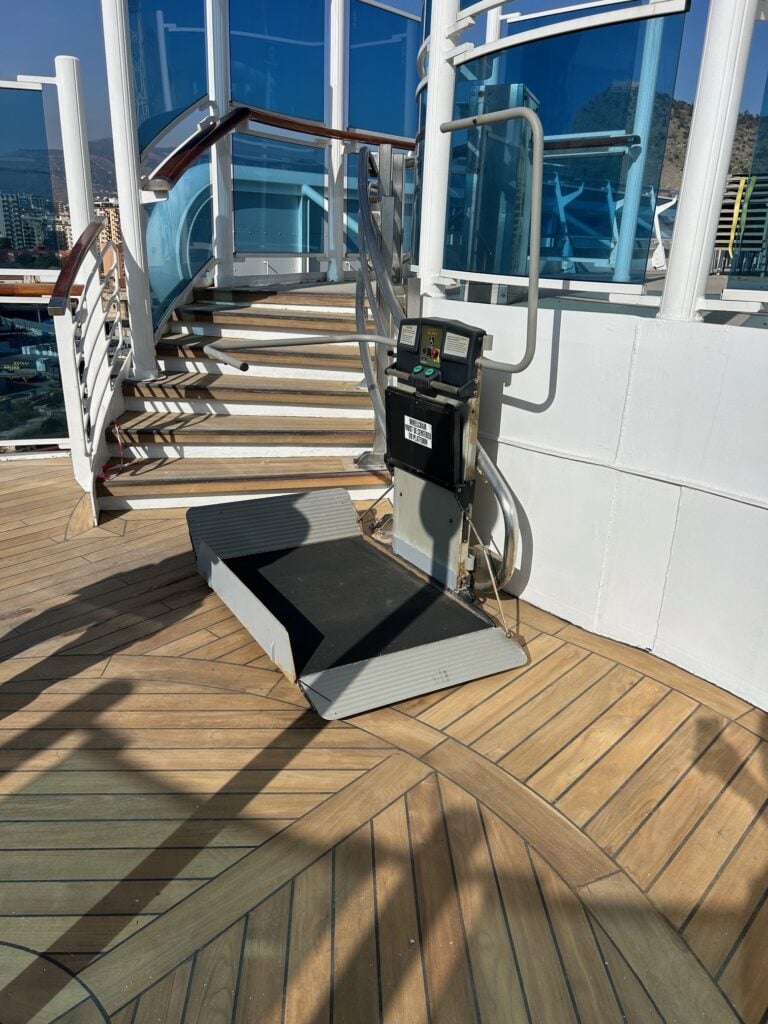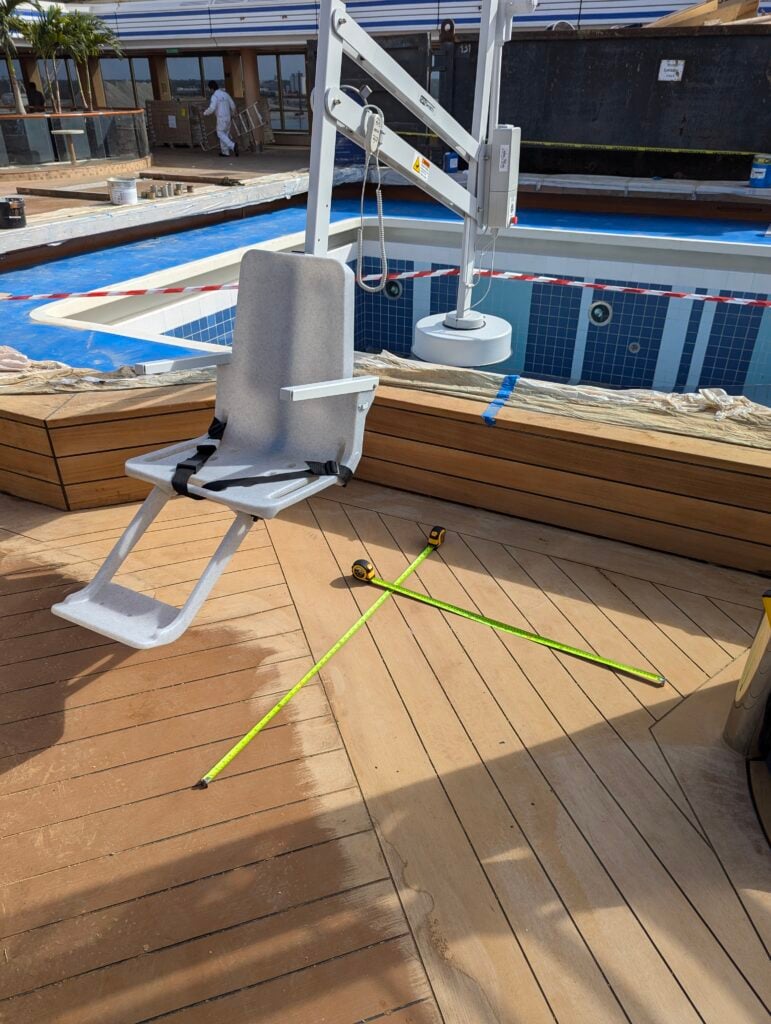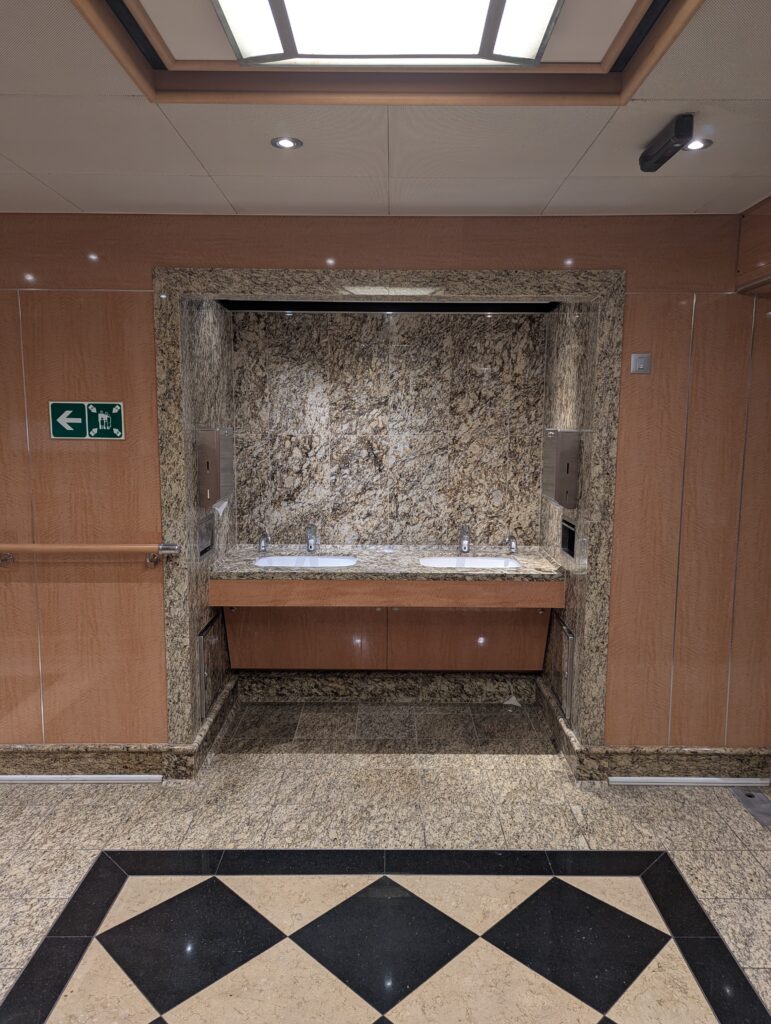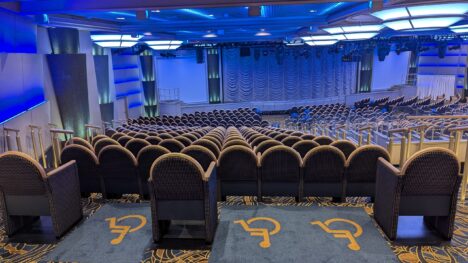Here at CSI Plus, we like to keep the conversation going. With our community of experts in their field, organic exchanges covering everything from the state of the industry to the forthcoming innovations are at the heart of all our events. From our online conferences to our tours and lectures on board cruise ships, we create talking points that our community carries on. Here, Building One Consulting responds to our recent online event, How to Make Beautiful Designs Accessible, with their own perspective on designing cruise ship interiors within – and beyond – ADA standards.
Create better guest experience by improving accessibility
Building One Consulting is a US-based firm specializing in supporting owners, designers, developers, and investors from design through construction. We support cruise lines and design teams integrate accessibility into every phase of a ship’s lifecycle. The recent webinar on “How to Make Beautiful Designs Accessible” was a much-needed reminder that accessibility isn’t only about legal compliance, it’s about inclusion. Presenters, Ed Warner and Carly Sharp, of Motionspot, encouraged the cruise industry to think beyond wheelchairs, embrace neurodiversity, and recognize the full range of physical and cognitive disabilities of travelers.
Within the cruise industry, accessibility presents both a design opportunity and a social responsibility. Expectations around equity and universal design are growing, which means leaders in the industry should start seeing accessibility as a creative and business advantage rather than just a checklist. We wanted to share response to the points raised during the webinar. In a way, this is also a practical starting point for cruise lines, design studios, and suppliers. We will be covering US law specifically. However, while US law was written with American environments in mind, many of the concepts and standards can apply globally, and are required for vessels visiting US ports under the ADA.
What is the ADA and why should it matter to you?
The Americans with Disabilities Act (ADA) is a US Civil Rights law, passed in 1990 to prohibit discrimination against individuals with disabilities. It applies to many different areas of life – from employment and transportation to public accommodations. In the design world, the most relevant parts are found in the 2010 ADA Standards for Accessible Design. These are a set of technical standards that provide requirements for everything from door widths to signage and seating.
What qualifies as a disability?
Under the ADA, a disability is defined as a physical or mental impairment that substantially limits one or more major life activity.
This broad definition reinforces a key point from the webinar – accessibility isn’t just about wheelchairs! The definition includes mobility, visual, hearing, cognitive processing, and mental health conditions, among others.


The 2010 ADA standards: the minimum requirement
So, what resources are available to cruise ship interiors designers looking to create a beautiful, accessible space? The 2010 ADA Standards for Accessible Design provide detailed technical guidance that supports a variety of user needs, not just for mobility. Here are a few examples of the standards included:
- Reach ranges and operable parts ensure controls are usable by people with limited upper body mobility or seated users.
- Visual contrast and tactile warnings support users with low vision or who are blind.
- Signage requirements promote wayfinding for guests who are neurodiverse, nonverbal, or have cognitive disabilities.
These standards help designers and construction and refit teams avoid guesswork. They’re not perfect but they are a valuable starting point. In many cases they represent the minimum requirements.
Before 2010, the ADA relied on the 1991 Standards for Accessible Design which were more limited in scope and detail. Under the ADA’s Safe Harbor provision existing features that complied with the 1991 standards do not need to be modified to meet the 2010 standards, unless these areas are altered.
For an overview of the Standards, see ADA.gov for ADA Standards for Accessible Design or consult the US Access Board. Of course, Building One is also here as a resource as you tackle improving accessibility!
Understanding the market opportunity
According to the US Department of Transportation over 25 million adults in the United States have travel limiting disabilities. The disposable income of people with disabilities worldwide is an estimated $1.2 trillion! As noted in the webinar, these individuals have a growing interest in travel.
Cruise lines that overlook accessibility may not only miss legal compliance, but they miss out on a loyal, multi-generational, and often underserved customer base. Accessible features don’t just serve guests with disabilities, they also help caregivers, older adults, and families with young children.
What’s required for cruise ships?
All cruise ships that embark and disembark in US ports must comply with ADA standards. While working towards compliance, we suggest focusing on areas that have the greatest impact on the largest number of guests. If you aren’t sure where to start, some good guidance for accessibility aboard cruise ships includes:
- Mobility access in public spaces
- Accessible routes to dining, recreation, and guest cabins
- Communication access like visual alarms and assistive listening
- Access to emergency and evacuation procedures
It’s worth noting that litigation around cruise ship accessibility has been increasing over the last decade, particularly in the areas of accessible cabins, reservation systems and excursion availability. Being proactive matters!


Retrofitting for accessibility
Cruise ships present a unique challenge when it comes to retrofitting. Space is limited and beautiful design is critical. But that doesn’t mean accessibility is out of reach! Here are a few starting points:
- Prioritize accessible routes. Clear, well-marked, and unobstructed routes benefit all guests and are key for both mobility and cognitive access.
- Upgrade common areas first. Lounges, theaters, restrooms, and dining areas can be adapted with better signage, maneuvering space, and seating options.
- Use modular solutions. Grab bars, portable ramps, or furniture with adjustable height and use options can improve accessibility without a complete overhaul of an area.
- Think beyond mobility. Consider installing induction loops, captioning services or calming rooms for sensory regulation.
Retrofitting doesn’t have to look like an afterthought. When done thoughtfully these changes can enhance your design, rather than distract from it.
Plan Early and Design Beautifully
One of the most important messages from the webinar was this – accessibility looks better when it’s built in from the start. When accessibility is integrated during early design phases, the result is more seamless and more beautiful. Consider:
- Cabins designed with privacy, usability and aesthetic coherence.
- Wayfinding systems that are intuitive for everyone, not just those with disabilities.
- Color palettes and textures that are both elegant and navigable for people with low vision or sensory sensitivities.
Bringing accessibility into the conversation early will mean fewer compromises later and a more inclusive experience overall.
Final Thoughts
Accessibility isn’t a trend and it’s not just a legal box to check. It’s a design principle that helps you welcome more people, tell a better story, and deliver a more enjoyable experience for every guest aboard your ship.
Start small if you need to. Learn from your peers. Test your spaces. And most importantly, keep asking how your design can serve more people more thoughtfully.
